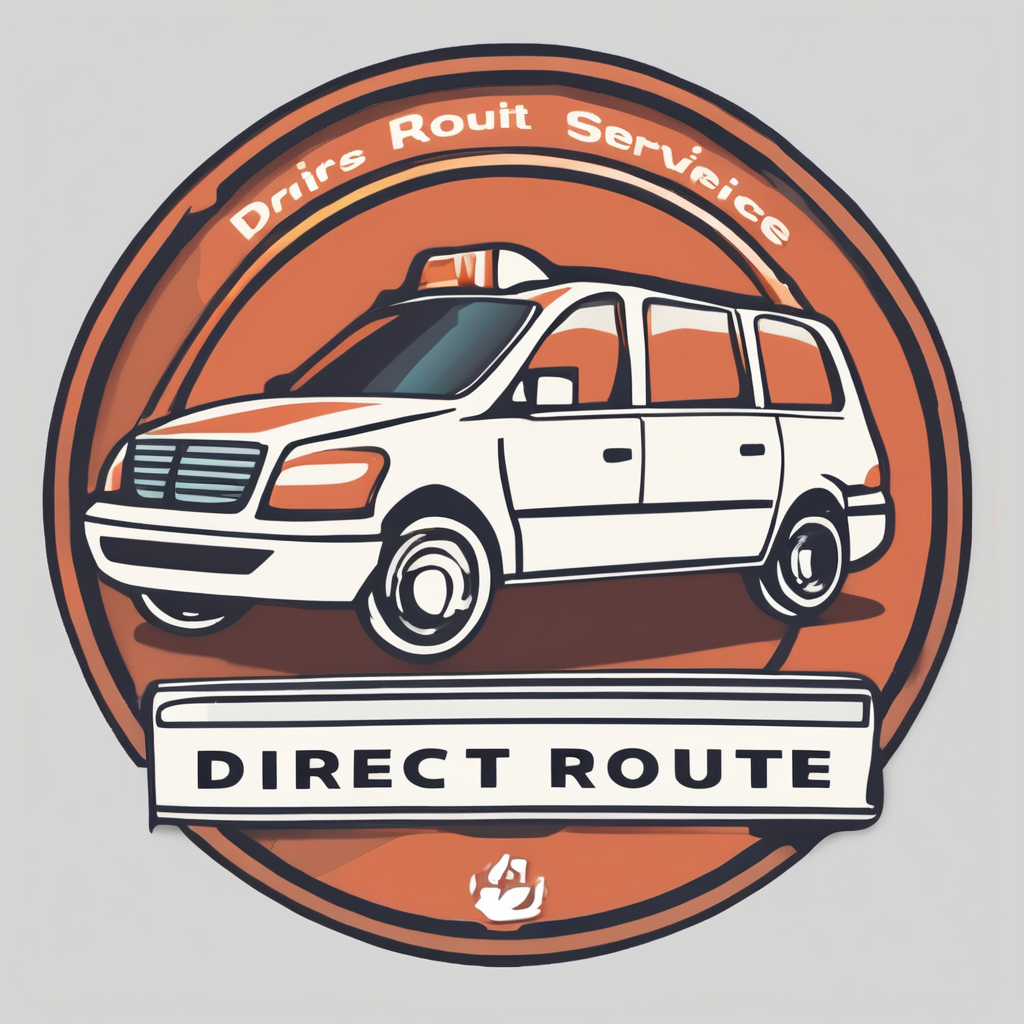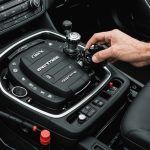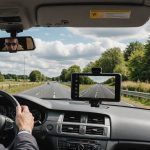Understanding UK Road Regulations: The Role of Dashboard Cameras in Driving Safety
Driving in the UK can be a complex and sometimes daunting task, especially with the myriad of road regulations and safety measures in place. One of the most significant advancements in driving safety in recent years is the increased use of dashboard cameras, or dash cams. These devices have become essential tools for drivers, providing a range of benefits that enhance road safety, aid in compliance with regulations, and offer practical advantages in various driving scenarios.
What are Dashboard Cameras?
Dashboard cameras are small, compact devices mounted on the dashboard or windshield of a vehicle. They continuously record the view from the front (and sometimes rear) of the car, capturing video and audio data. Here are some key features and benefits of using a dash cam:
Topic to read : How can you determine if your vehicle’s emissions are within legal limits in the UK?
Key Features
- Continuous Recording: Dash cams record continuously, often using a loop system to overwrite older footage.
- High-Resolution Video: Modern dash cams can capture high-definition video, making it easier to identify details such as license plates and road signs.
- Night Vision: Many dash cams come with night vision capabilities, ensuring clear footage even in low-light conditions.
- GPS and Speed Data: Some models include GPS, which can record the vehicle’s speed, location, and time.
- Impact Detection: Many dash cams have built-in G-sensors that detect impacts and automatically save the footage around the time of the incident.
Benefits
- Evidence in Accidents: Dash cam footage can serve as crucial evidence in the event of an accident, helping to determine fault and support insurance claims.
- Improved Driving Behavior: Knowing that their driving is being recorded can encourage drivers to adhere more strictly to road regulations and drive more safely.
- Protection Against False Claims: Dash cam footage can protect drivers from false claims or insurance scams.
- Traffic and Road Monitoring: Dash cams can help monitor traffic conditions and road safety, providing valuable data for road users and authorities.
How Dashboard Cameras Support Road Safety
Dashboard cameras play a significant role in enhancing road safety in several ways:
Reducing Accidents
Dash cams can help reduce accidents by promoting safer driving practices. Here are a few ways they achieve this:
Also to discover : How should UK drivers approach winter driving safety?
- Deterrent Effect: The knowledge that driving is being recorded can deter drivers from engaging in risky behavior such as speeding or running red lights.
- Evidence for Authorities: In the event of an accident, dash cam footage can provide authorities with clear evidence to investigate and determine the cause of the incident.
- Driver Education: Reviewing dash cam footage can help drivers identify and correct unsafe driving habits.
Compliance with Road Regulations
Dash cams help drivers comply with various road regulations, including those related to speed, traffic lights, and general road safety.
Speed Cameras and Speed Limits
- Speed Cameras: Dash cams can alert drivers to the presence of speed cameras, helping them maintain the speed limit and avoid fines.
- Speed Limits: By recording speed data, dash cams can help drivers ensure they are adhering to speed limits, which is crucial for road safety.
Traffic Lights and Red Light Cameras
- Running Red Lights: Dash cam footage can be used to identify drivers who run red lights, a serious offense that poses significant risks to other road users.
- Traffic Light Cameras: Knowing that their actions are being recorded can discourage drivers from running red lights, reducing the risk of accidents.
Practical Advantages
Breakdown Cover and Assistance
- In the event of a breakdown, dash cam footage can provide valuable data to breakdown services, helping them understand the situation better and provide more effective assistance.
Car Insurance
- Many insurance companies offer discounts to drivers who use dash cams, as the footage can help resolve claims more efficiently and reduce the risk of false claims.
Types of Cameras Used for Road Safety
There are several types of cameras used to enhance road safety in the UK, each serving a different purpose:
Speed Cameras
- Fixed Speed Cameras: These are stationary cameras placed along roads to monitor speed.
- Mobile Speed Cameras: These are used by traffic police to monitor speed in various locations.
- Average Speed Cameras: These cameras measure the average speed of a vehicle over a certain distance.
Traffic Light Cameras
- Red Light Cameras: These cameras capture images of vehicles that run red lights, helping to enforce traffic light regulations.
Traffic Cameras
- CCTV Cameras: These cameras are used to monitor traffic flow and road conditions in real-time.
- ANPR (Automatic Number Plate Recognition) Cameras: These cameras capture the license plates of vehicles, helping in traffic management and enforcement.
How Dashboard Cameras Work
Understanding how dash cams work can help drivers make the most out of these devices.
Installation
- Dash cams are typically easy to install and can be mounted on the windshield or dashboard using a suction cup or adhesive mount.
Recording
- Dash cams record continuously, often using a loop system to overwrite older footage when the memory card is full.
- Some models have features like impact detection, which saves the footage around the time of an incident.
Data Protection
- It is important to ensure that dash cam footage is handled in compliance with data protection laws. Drivers should be aware of who has access to the footage and how it is stored.
Tips for Using Dashboard Cameras Effectively
Here are some practical tips for using dash cams effectively:
Choose the Right Model
- Resolution and Field of View: Opt for a high-resolution camera with a wide field of view to capture clear footage.
- Night Vision and GPS: Consider models with night vision and GPS for comprehensive data.
Regular Maintenance
- Memory Cards: Regularly check and replace memory cards to ensure continuous recording.
- Software Updates: Keep the dash cam software updated to ensure all features are functioning correctly.
Legal Considerations
- Data Protection: Be aware of data protection laws and ensure that footage is handled responsibly.
- Privacy: Respect the privacy of other road users and avoid recording in areas where privacy could be an issue.
Real-Life Examples and Anecdotes
Case Study: The Impact of Dash Cams on Insurance Claims
A driver in the UK was involved in a minor accident where another driver claimed the incident was the first driver’s fault. However, the dash cam footage clearly showed that the other driver was at fault. This evidence helped resolve the insurance claim quickly and accurately, highlighting the practical benefits of using a dash cam.
Anecdote: How a Dash Cam Saved a Driver from a False Claim
A driver was falsely accused of running a red light, but the dash cam footage proved that the light was still green when the driver passed through the intersection. This saved the driver from receiving an unjust fine and points on their license.
Dashboard cameras have become an indispensable tool for drivers in the UK, enhancing road safety, aiding in compliance with road regulations, and offering numerous practical advantages. By understanding how these cameras work and how to use them effectively, drivers can significantly improve their driving experience and contribute to a safer road environment.
Key Takeaways
- Improved Safety: Dash cams promote safer driving practices and provide evidence in the event of accidents.
- Compliance: They help drivers comply with speed limits, traffic lights, and other road regulations.
- Practical Benefits: Dash cams can lead to insurance discounts, aid in breakdown situations, and provide valuable data for traffic management.
Incorporating a dash cam into your driving routine is a simple yet effective way to enhance your safety on the road and ensure you are always in compliance with UK road regulations.
Detailed Bullet Point List: Benefits of Using a Dash Cam
- Evidence in Accidents: Provides clear footage to determine fault and support insurance claims.
- Improved Driving Behavior: Encourages safer driving practices by knowing that driving is being recorded.
- Protection Against False Claims: Protects drivers from false claims or insurance scams.
- Traffic and Road Monitoring: Helps monitor traffic conditions and road safety.
- Speed Camera Alerts: Alerts drivers to the presence of speed cameras.
- Speed Data: Records speed data to ensure adherence to speed limits.
- Red Light Camera Detection: Alerts drivers to the presence of red light cameras.
- Breakdown Assistance: Provides valuable data to breakdown services.
- Car Insurance Discounts: Many insurance companies offer discounts for using a dash cam.
- Data Protection Compliance: Ensures compliance with data protection laws when handling footage.
Comprehensive Table: Comparison of Different Types of Road Safety Cameras
| Type of Camera | Purpose | Features |
|---|---|---|
| Speed Cameras | Monitor speed | Fixed, mobile, average speed measurement |
| Traffic Light Cameras | Enforce traffic light regulations | Capture images of vehicles running red lights |
| Traffic Cameras | Monitor traffic flow and road conditions | CCTV, ANPR (Automatic Number Plate Recognition) |
| Dashboard Cameras | Record driving footage | Continuous recording, impact detection, GPS, night vision |
Quotes from Experts and Drivers
- “Dash cams have been a game-changer for road safety. They not only provide evidence in accidents but also encourage drivers to be more cautious on the road.” – John Smith, Road Safety Expert
- “I was involved in an accident, and my dash cam footage proved that the other driver was at fault. It saved me from a lot of hassle and potential financial loss.” – Jane Doe, Driver
- “Using a dash cam has made me a more defensive driver. Knowing that my driving is being recorded makes me more aware of my actions on the road.” – Michael Johnson, Driver
By integrating these insights and practical tips into your driving routine, you can make the most out of dashboard cameras and contribute to a safer and more compliant driving environment in the UK.
Understanding UK Road Regulations Related to Dashboard Cameras
When it comes to dashboard cameras in the UK, understanding the road regulations is essential for both installation and usage. These devices are generally legal, but there are specific UK road regulations that dictate how they should be used.
Notably, dashboard camera laws focus on ensuring that the device doesn’t obstruct the driver’s view. It is imperative to install your dash cam behind the rear-view mirror or in an area that minimally affects your field of vision. Additionally, it’s important to ensure that your camera doesn’t have any loose wires that could pose a risk.
In terms of legal requirements, the footage recorded should be used responsibly. It is legal to share dash cam footage with authorities or insurance companies, as it can be pivotal evidence in the event of an accident. However, public sharing should be considered cautiously to comply with privacy laws, particularly the General Data Protection Regulation (GDPR) in the UK.
Finally, a common misconception is that dash cams are compulsory; however, they are not mandatory but highly recommended for evidence collection. Ensuring you adhere to these guidelines not only keeps you compliant but also enhances road safety.
Impact of Dashboard Cameras on Driving Safety
Dashboard cameras, or dash cams, play a significant role in driving safety by enhancing accountability and improving driver behavior. These compact devices capture real-time footage, offering an unbiased perspective of events that occur during a journey. When drivers know their actions are being recorded, they tend to be more conscious of their behavior, which can lead to safer driving practices.
Statistics strongly support the benefits of dash cams. Studies have shown a noticeable decline in accidents when these devices are installed in vehicles. For example, insurance companies report that vehicles equipped with dash cams witness up to a 20% reduction in accident claims. This illustrates the impact of dash cams as tools for accident prevention.
Moreover, drivers who use dash cams often share compelling testimonies about their experiences. Many report feeling a sense of security, knowing they have evidence in case of disputes. Others have successfully used footage to contest unwarranted traffic tickets or defend against fraudulent claims. Such personal accounts highlight the practical benefits of dash cams, affirming their positive influence on road safety and driver accountability.
Dashboard Cameras and Accident Documentation
Dashboard cameras, or dash cams, have become indispensable for accident documentation. These devices capture incident recording with precision, providing crucial evidence during traffic collisions. When an accident occurs, dash cam footage can be pivotal in understanding the events leading up to the incident. By capturing real-time visuals, these cameras offer an unobstructed view that isn’t influenced by human error or bias, providing reliable data.
In many legal proceedings, the value of timestamped video evidence cannot be overstated. Such recordings serve as an unbiased witness, offering clarity to often complex situations. For example, in instances where drivers dispute fault, the video evidence from a dash cam can validate claims about the sequence of events, helping to prevent fraudulent insurance claims and ensuring that justice is served.
Analysis of case studies reveals that dash cam footage has played a critical role in resolving claims. In various cases, video evidence has clarified ambiguities, ranging from determining vehicle speed and positions to identifying environmental conditions at the time of the accident. This capability strengthens one’s position in legal and insurance discussions, providing peace of mind that one’s account of the incident is accurately supported by the recordings.
Role of Dashboard Cameras in Insurance Claims
Dashboard cameras, or dash cams, have revolutionised the insurance claims process by providing clear, irrefutable evidence in the event of an accident. This footage can significantly simplify the often-complex process of filing a claim, reducing disputes over fault and potentially accelerating settlement. The availability of dash cam evidence means that insurance companies can assess incidents with heightened accuracy, enhancing both accountability and transparency.
Possessing a dash cam can even lead to financial perks, as some insurers might offer reduced premiums. The rationale is straightforward: with dash cam evidence, the likelihood of fraudulent claims diminishes, thus lowering the risk for insurers. It’s a mutual benefit, as policyholders enjoy potential savings while insurers gain peace of mind from verifiable data.
Insurers’ attitudes towards dash cams are increasingly positive. Many recognise the impact that solid, video-based evidence can have on claim outcomes, supporting rightful claims quickly while deterring dishonest attempts. This shift is fostering an environment where insurance benefits align with technology advancements, leading to fairer, more efficient claims processing. Dash cams, therefore, play a crucial role in evolving how insurance companies handle and resolve claims.
Legal Considerations: Data Protection and Privacy
Understanding how data protection and privacy laws apply to dash cam usage is crucial for responsible drivers. Many regions require adherence to specific dash cam regulations, ensuring that privacy is respected while using these devices.
Primarily, data protection regulations focus on how video recordings are collected, stored, and used. In numerous jurisdictions, drivers must inform passengers if a dash cam is operational within their vehicle. This applies to ride-sharing services as well. Furthermore, any footage captured should not be shared publicly without consent, safeguarding the privacy of others captured in the video.
Driver responsibilities extend beyond their vehicle’s interior. Individuals must also consider the privacy of other road users, such as pedestrians and drivers, whose activities may be unintentionally recorded. It’s essential to blur or omit identifiable information of others, such as license plates or faces, before any dissemination of footage.
To comply with privacy laws, focus on these steps:
- Ensure recordings are securely stored to prevent unauthorized access.
- Regularly review relevant legislation to remain informed about your responsibilities.
- Implement measures to anonymize sensitive data when using dash cam footage for evidence or sharing.
Employ these strategies to responsibly enjoy the benefits of a dash cam while maintaining respect for privacy.
Practical Advice for Drivers Using Dashboard Cameras
Selecting the right dashboard camera is crucial for capturing clear footage and ensuring peace of mind while driving. When choosing a dash cam, consider factors like video quality, storage capacity, and features like GPS and night vision. Higher resolution models capture clearer details, essential for identifying license plates. Additionally, models with loop recording ensure continuous recording without manual intervention.
Once you’ve selected your dash cam, follow these installation tips for effective use. Mount the camera at a central position on the windshield, ensuring an unobstructed view. Use the adhesive provided or a suction cup mount for stability, considering the legal regulations regarding windshield obstructions. Securely hide wiring to prevent distractions and ensure safety.
In real-world scenarios, dash cam footage proves invaluable. For insurance claims, it provides unbiased evidence of incidents, which can significantly streamline the claims process. Additionally, some dash cams offer built-in WiFi, allowing easy transfer of footage to your smartphone for quick sharing when needed. Cultivating best practices, such as regularly formatting the SD card and checking camera settings, enhances reliability and ensures you’re well-prepared to utilize your dash cam effectively.











